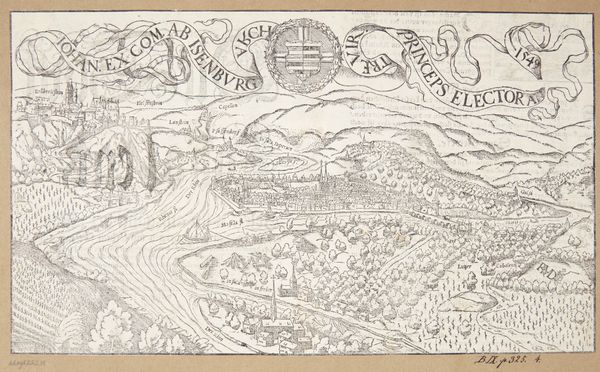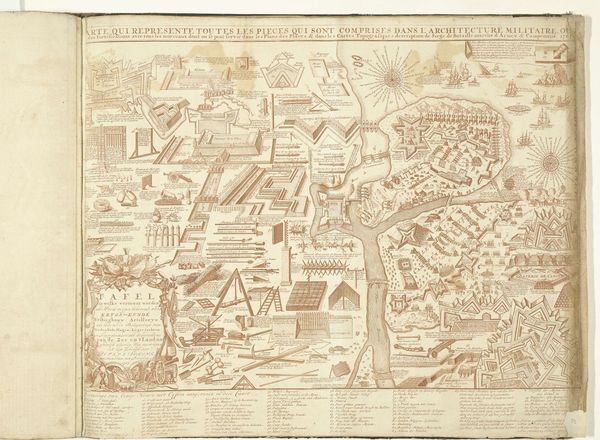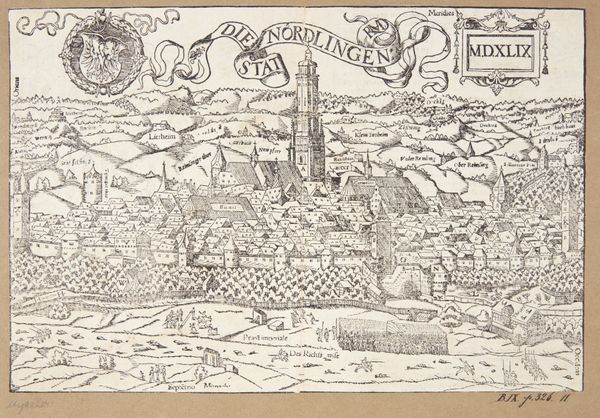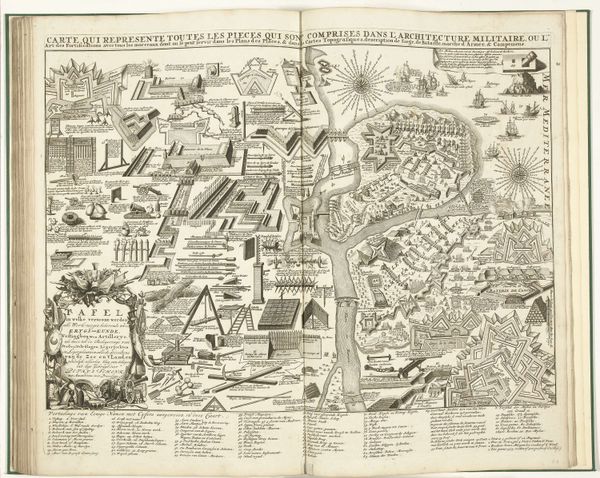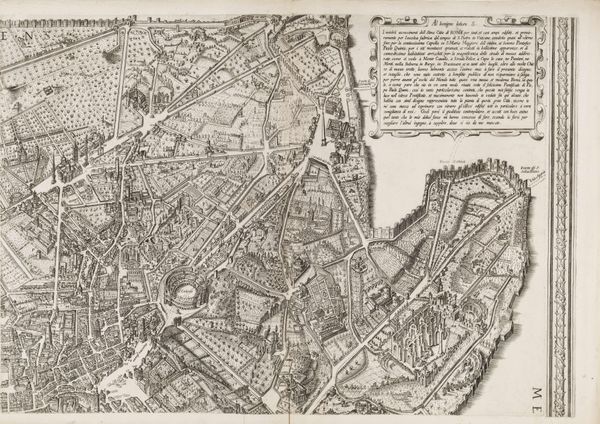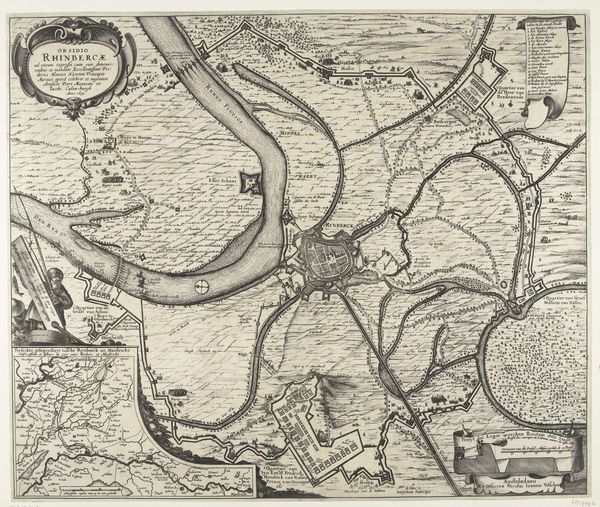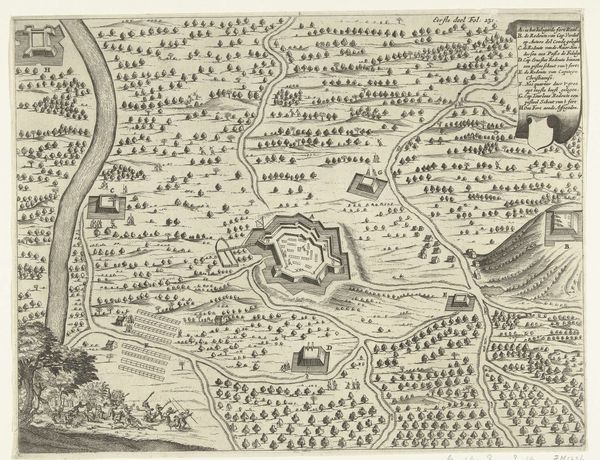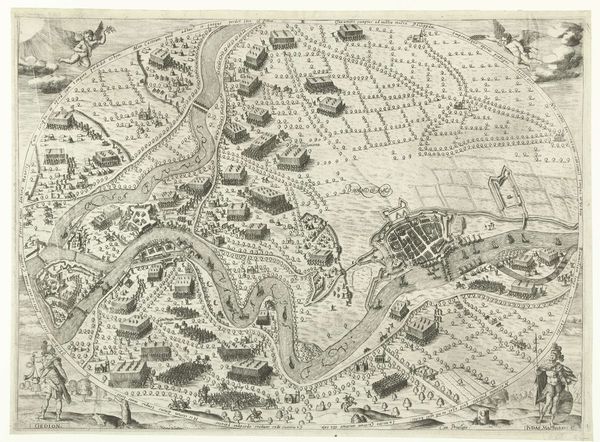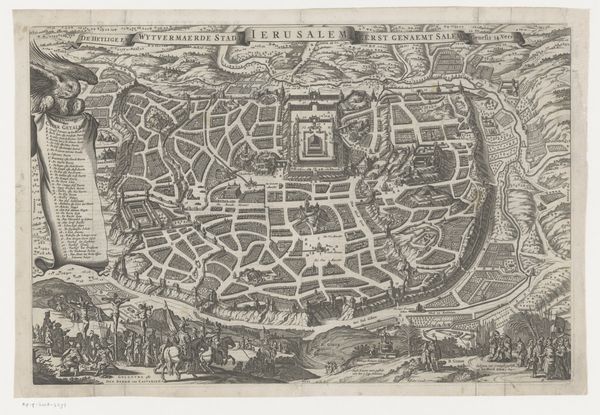
drawing, print, woodcut
#
drawing
# print
#
perspective
#
geometric
#
woodcut
#
line
#
sketchbook drawing
#
cityscape
#
northern-renaissance
Dimensions: 255 mm (height) x 360 mm (width) (bladmaal)
Editor: This is "Kort over Paris," a woodcut drawing of Paris created around 1548 or 1549 by Hans Rudolf Manuel Deutsch. The incredibly detailed lines constructing this city suggest so much—growth, movement, organization. It’s both incredibly intricate and gives the impression of a planned urban design. What stands out to you in this piece? Curator: The symbolic language employed here speaks volumes, doesn't it? Notice how the river, Seine, bifurcates the city, acting as both a life source and a dividing line. Rivers often represented fluidity and change, the ever-moving force of time. Does this division also hint at social strata, perhaps the wealthy versus the working class, existing on opposing banks? Editor: That's fascinating, I hadn’t considered the social aspect of the river's placement. It’s interesting to think that a natural element could symbolize division. Curator: Indeed. And observe how the artist uses perspective, not perfectly, mind you, but aspirationally. The higher vantage point implies power, control, and an ambition to understand the entirety of the subject, like a god looking down on humanity. What psychological impact might that have had on viewers then, and perhaps even now? Editor: So the visual language works on multiple levels. I'm learning that there's so much more to it than just the image itself. It makes you wonder, what stories do you think this city, seen from above, wanted to tell? Curator: Perhaps a story of human ingenuity, our ability to order and contain the natural world. The image acts as a powerful statement of intent, encapsulating ambition, order and human domination. I never quite considered it from that view point. Thank you!
Comments
No comments
Be the first to comment and join the conversation on the ultimate creative platform.


